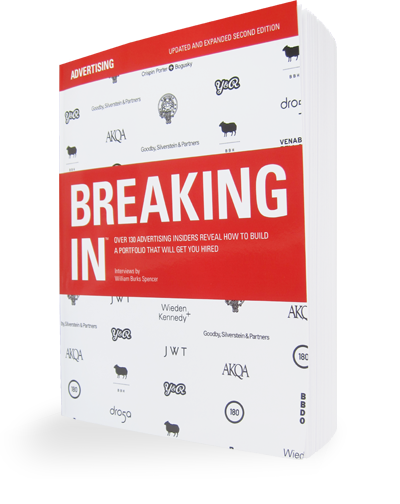Check out some great work from CC Tang.
What do you think of showing work that is not advertising?
When I was teaching, we had a program where students would work on real briefs. And we were working for the Hong Kong Airport Authority, trying to promote Terminal 2. And we had students from interior design, product design—not just ad students. So our solution was not what the brief was asking for. It was an installation and event. It was a giant chess board with airplanes in different colors. Like a playground. The whole thing was so unexpected that they decided to build it.
At Ogilvy, where I was trained, they had a saying which came from David Ogilvy himself: “When you hire people, hire people from other trades.” The reason why he said that was that these people may see life differently. I think it’s true. I feel that new ideas are when two old ideas meet for the first time. So if people come from other backgrounds, why not? I don’t expect people I hired to contribute to the agency for the first year or 18 months. Because you have to invest a lot of time to train them. But this doesn’t happen much anymore. Someone is hired and is put to work on a computer doing Photoshop or layouts or retouching, and after a year or two they become very good at that but they may not become a good communicator. Maybe what the industry is lacking now is investing in talent. And I don’t believe the schools can do that. What you learn in school will be obsolete the day you walk out of school. Things are moving so fast.
One thing is to find programs where you work on real projects or ask tutors who are in the industry for real briefs. I don’t know why, but when clients deal with agencies they are devils, but when they work with students they are angels. One example: Coca-Cola had a youth marketing project and they were so receptive to crazy ideas from students. Like letting teens create their own holiday and sponsoring it. Or making a vending machine that’s like a piano, and when you buy something you can download music and that becomes a musical coupon to buy music from the web. There were a lot of crazy ideas, and they [Coca-Cola] were so receptive to students’ fresh, unpolluted perspective. And even ideas that were fresh and unexpected and even dangerous.
[ … ]
What do you look for in a student portfolio? And what impresses you?
That’s a really difficult question to answer. I taught in the university in 2005, and the way I would look at a student’s portfolio was to see whether they knew how to see life. And organized it so they didn’t show you everything they had done since primary school. People are not interested in how you learned to draw, how you learned Photoshop, how you learned to do a layout. But I really want to know how you look at things. How you communicate a message which can persuade people or connect with people.
So, first: are they being selective about what they put in their portfolio and how they organize it? And that applies to people in the industry. And, quite surprisingly, you’ll see a copywriter or art director or ACD come to you with everything they’ve done from their first job to their latest work. Second, I like students to be able to articulate the reason behind the work. Because usually the work will not be D&AD quality—you don’t expect that. But you expect it to be insightful. They look at something from their perspective and come up with a communication idea. Whether it’s perfectly art-directed or perfectly written is not relevant. We’re not looking for that. We’re looking for people who bring a fresh perspective. That’s what I’m looking for.
[ … ]


Comments are closed.